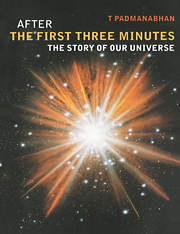4 - Getting to know the universe
Published online by Cambridge University Press: 02 November 2009
Summary
Stars: Nature's nuclear plants
It is said that a man in the street once asked the scientist Descartes the question: ‘Tell me, wise man, how many stars are there in heaven?’ Descartes apparently replied, ‘Idiot! no one can comprehend the incomprehensible’. Well, Descartes was wrong. We today have a fairly reasonable idea about not only the total number of stars but also many of their properties.
To begin with, it is not really all that difficult to count the number of stars visible to the naked eye. It only takes patience, persistence (and a certain kind of madness!) to do this, and many ancient astronomers have done this counting. There are only about 6000 stars which are visible to the naked eye – a number which is quite small by astronomical standards. The Greek astronomer Hipparchus not only counted but also classified the visible stars based on their brightness. The brightest set (about 20 or so) was called the stars of ‘first magnitude’, the next brightest ones were called ‘second magnitude’, etc. The stars which were barely visible to the naked eye, in this scheme, were the 6th magnitude stars. Typically, stars of second magnitude are about 2½ times fainter than those of first magnitude, stars of third magnitude are 2½ times fainter than those of second magnitude, and so on. This way, the sixth magnitude stars are about 100 times fainter than the brightest stars. With powerful telescopes, we can now see stars which are about 2000 million times fainter than the first magnitude stars, and – of course – count them.
- Type
- Chapter
- Information
- After the First Three MinutesThe Story of Our Universe, pp. 65 - 95Publisher: Cambridge University PressPrint publication year: 1998

